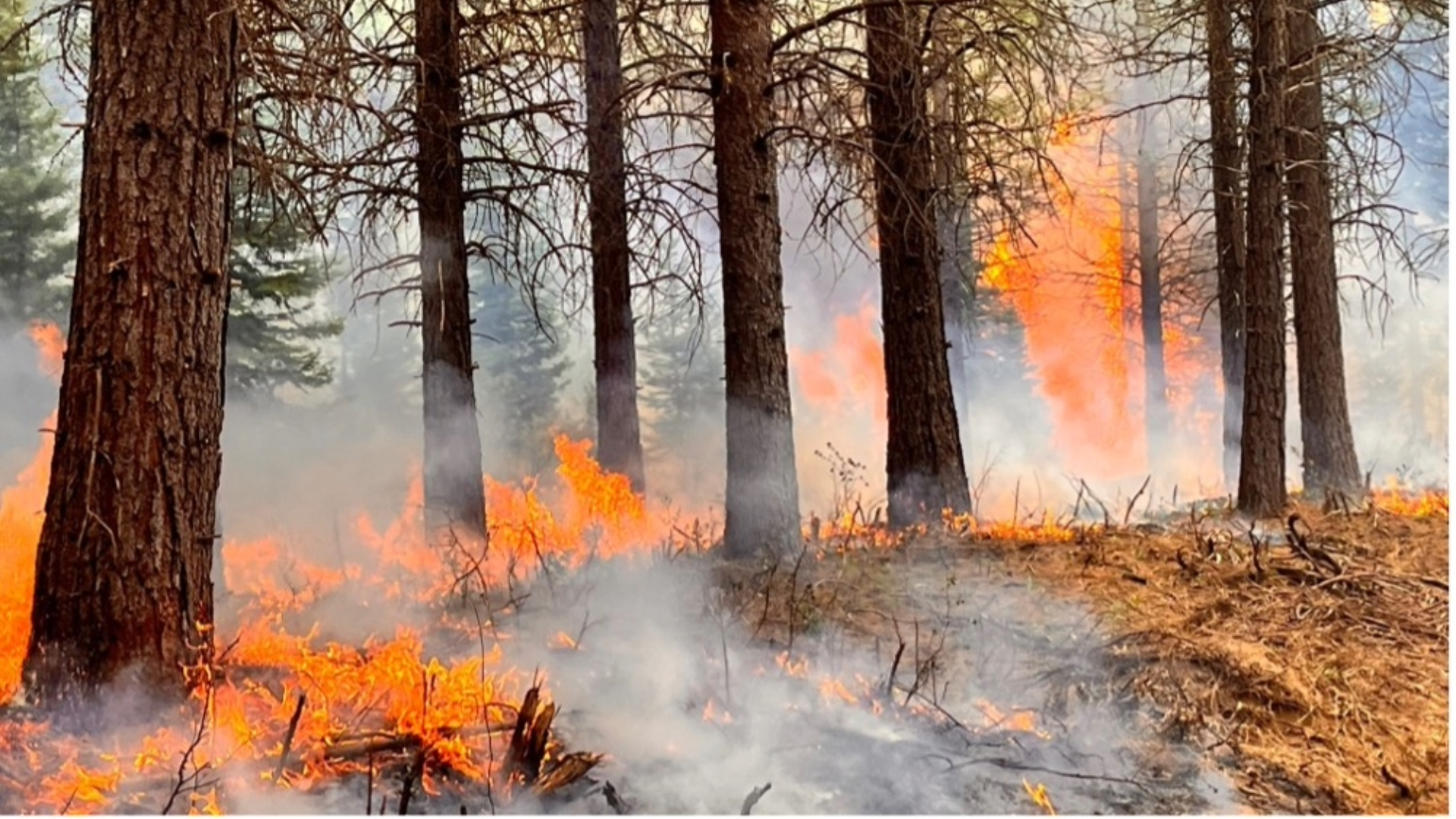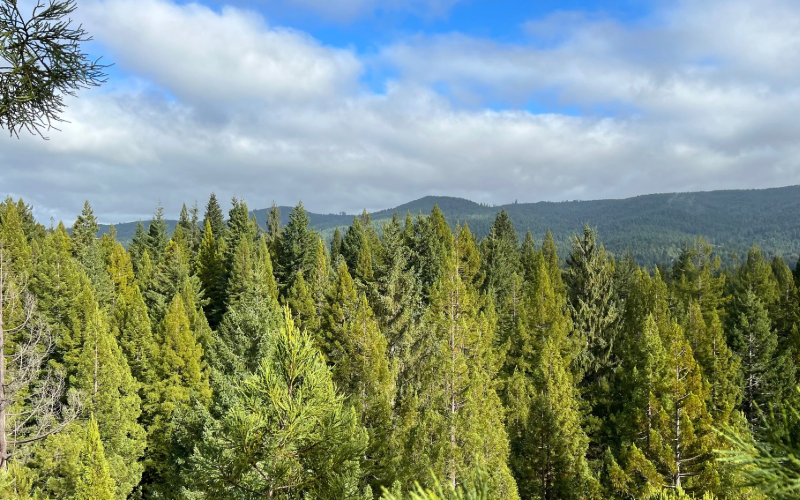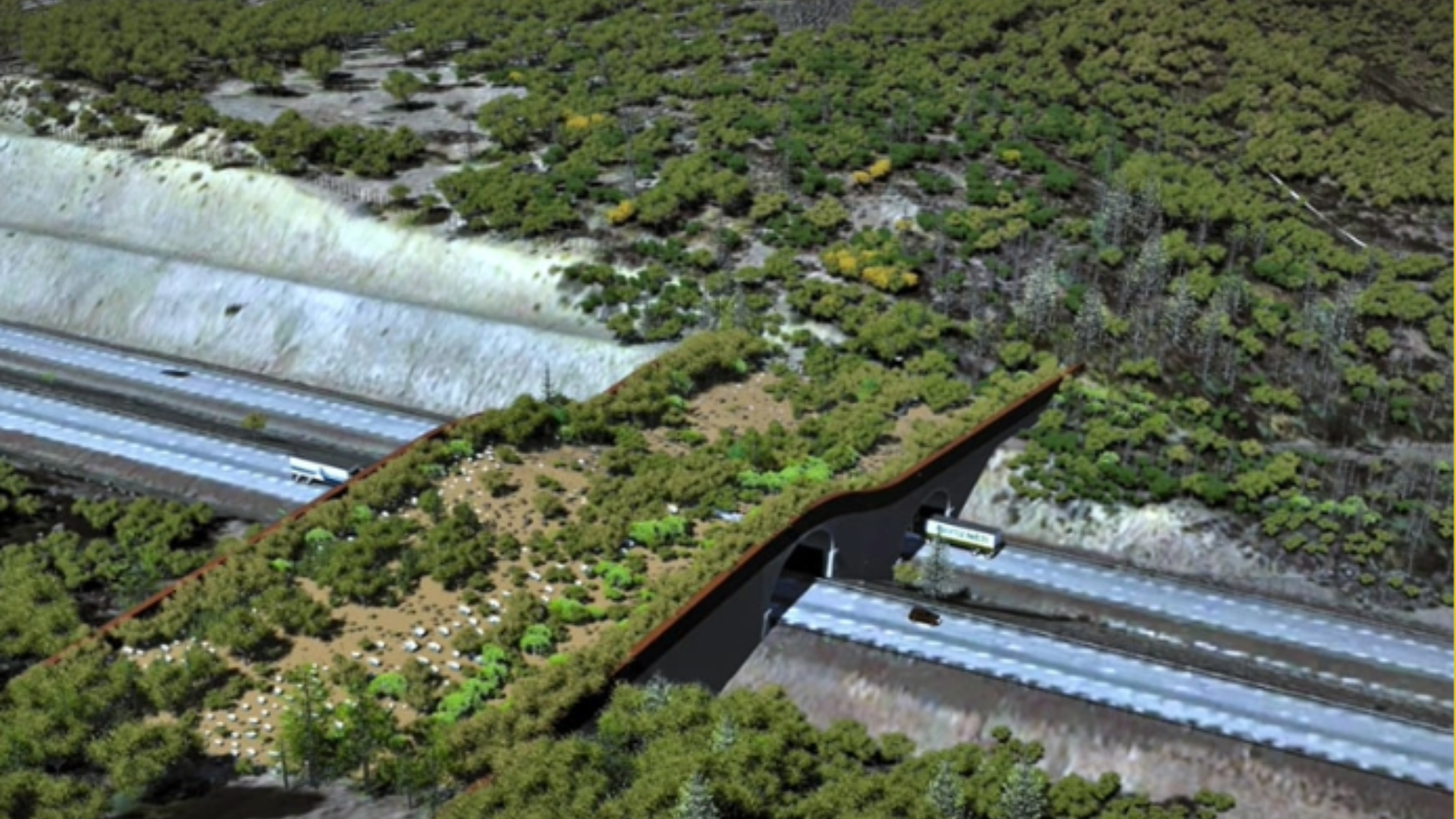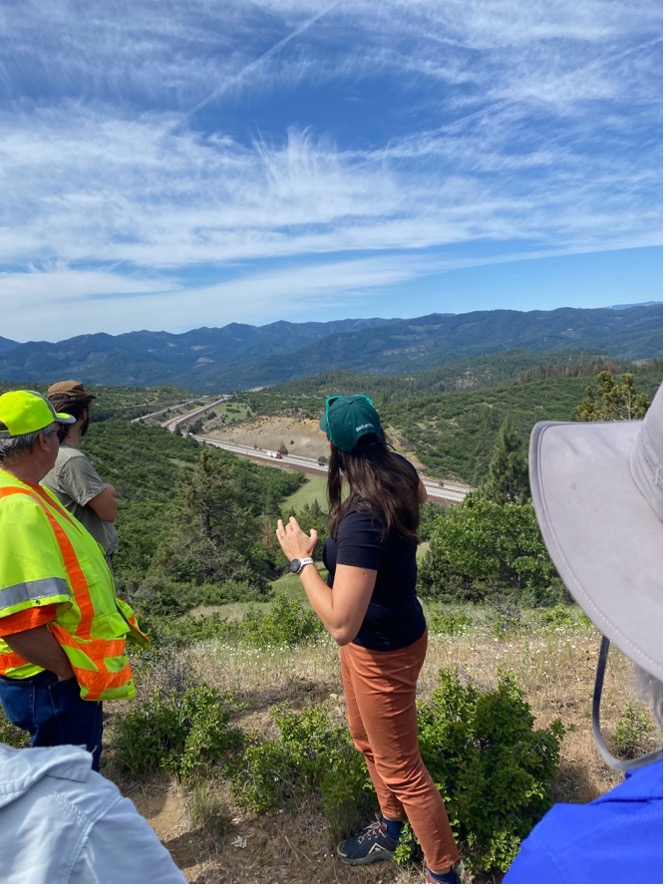FOREST FLASH
May 2025
In Pacific Forest Trust’s e-newsletter, Forest Flash, we send you the most recent PFT news and updates on forests, clean water, climate, and wildlife. Subscribe here.

Pacific Forest Trust’s commitment to returning beneficial fire to fire-adapted forests continues in full force at McCloud Soda Springs Working Forest. This April, we successfully completed burning on another 440 hundred acre—following up on the nearly 750 acres burned in 2024—of prescribed fire on the property. Restoring more fire resilience to the forests is integral to our long-term stewardship of the property and the safety of the adjacent town of McCloud, CA. Favorable weather conditions in late April allowed our fire crews to burn approximately 440 acres, in tandem with the burn, we also partnered with the California Conservation Corps to complete 10 acres of meadow enhancement work .

Jack Singer, PFT’s Stewardship Director, RPF #3247, in the burn unit.
Restoring a more natural fire regime is a key part of the ecological management of the 1,350-acre working forest, which is ponderosa pine dominated mixed conifer forest. It also has multiple springs feeding a key tributary to the Yét Atwam Creek that flows into the McCloud River, almost doubling its volume. With a final burn planned for this fall, we are nearing completion of what will be one of the largest prescribed burns on private commercial forestland in California in over two decades.
Prescribed fire is essential not just for forest health but for public safety. These burns reduce hazardous fuels, maintain open spacing between trees, and promote the growth of grasses and shrubs critical to native wildlife. Just as importantly, they create a buffer for communities, such as McCloud where wildfire will be slowed down in its progress, enabling fire fighters to stop fires before people and property are imperiled. Forests that have been thinned and then burned are shown to reduce the intensity and risk of intense, catastrophic fire by up to 75%. This is proactive fire management at its best: a powerful, science-based tool to protect people, water, and wildlife.
And, to spread the good word about “good fire,” we documented our 2024 burn on the property in this educational video series, which details all-things prescribed burn, from permitting to implementation to the long-term benefits. This resource continues to be a valuable one for landowners and other interested parties alike.
Stay tuned for final updates later this year as we bring this transformative project across the finish line.

Governor Newsom’s 2025 May Revise underscores the challenge of balancing California’s climate goals with a $12 billion budget shortfall. With economic uncertainty mounting and federal support in flux, the state’s budget proposes major shifts in funding, including cuts that would impact vital climate and conservation programs.
One key proposal is the elimination of 8% of state agency budgets through vacancy sweeps, including six positions in CAL FIRE’s Timber Harvest Plan (THP) review program. These positions have made a major difference to ensuring the Forest Practice Act is well-implemented in a timely fashion. PFT is actively advocating to restore these positions, emphasizing their importance to maintaining the quality and efficiency of state’s oversight of private forest management.
Another key piece of the Governor’s budget is the proposal to shift over $1.8 billion of CAL FIRE’s fire management budget from the General Fund to Cap-and-Trade auction revenues (Greenhouse Gas Reduction Fund, or GGRF). While this shift creates immediate savings, it eliminates $1.8 billion in previously planned discretionary GGRF investments. The GGRF funds support a multitude of important programs including fuels management, improvements to air quality, zero-emission transit, and conservation among them. These shifts in funding are likely to occur, given the state’s budget challenges.
The good news? Thanks to Prop 4, which voters passed last fall, there’s still solid backing for conservation in this year’s (and next’s) budget. We’re expecting around $286 million to be secured for biodiversity and habitat programs by the end of budget hearings in June. PFT is also working to ensure at least $500 million goes toward wildfire resilience. In fact, $170 million has already been set aside, including $10 million to help the Karuk Tribe launch a new Fire Resilience Center that will train more people in using “good fire” to restore forest health.
As budget negotiations continue into June, PFT remains deeply engaged, ensuring that forest stewardship, climate resilience, and biodiversity conservation remain top funding priorities.
Please consider a donation to the Pacific Forest Trust. Your help—in all capacities—makes our work possible. Thanks for supporting us as we support forests!

Earlier this month, Southern Oregon University hosted the Cascade-Klamath-Siskiyou Connectivity Symposium, bringing together scientists, land managers, and advocates to tackle one of the region’s most pressing ecological issues: habitat fragmentation and its impact on the region’s world renowned biodiversity. PFT’s Stewardship and Outreach Associate Lyndia Hammer helped organize this event, which centered on the urgent need to restore wildlife connectivity across this globally significant landscape. “It’s such a privilege to gather with so many knowledgeable and talented colleagues to share information and focus our collective energies and resources on the important and inspiring topic of wildlife habitat connectivity,” said Hammer.
The Cascade-Siskiyou region sits at the intersection of three major ecoregions—the Klamath Mountains, Southern Cascades, and Eastern Cascades Slopes—creating an extraordinary hotspot of biodiversity. The Siskiyou Crest, in particular, provides a vital east-west corridor for species movement. Home to a remarkable array of native and endemic plants and animals, it offers essential food, water, and cover for wide-ranging species like mountain lion, elk, and gray wolf, and imperiled species such as Pacific fisher and northern spotted owl.

Connectivity symposium-goers looking out over the proposed site for the wildlife crossing in southern Oregon.
But roads and development have fractured this once-contiguous habitat. Interstate 5, one of the most heavily traveled highways in the country, cuts directly through the Siskiyou Crest and is a major barrier—and kill zone—for wildlife. For decades, ecologists have identified this stretch of I-5 as the most significant obstacle to north-south wildlife movement in the region.
That challenge is becoming more dire. Climate change is forcing many species to move in search of cooler temperatures, water, or food, often across landscapes they’ve never traversed before. Increased wildlife traffic—compelled by climate, not just instinct—is making safe crossings more essential than ever.
That’s why Pacific Forest Trust has long championed the need for wildlife crossings. As a founding member of the Southern Oregon Wildlife Crossing Coalition, we strongly support efforts for the proposed I-5 wildlife overpass. We are hopeful that this project will get the green light to proceed in 2025. Progress on this critical step forward is being made possible through broad bipartisan support, including the leadership of Congressman Cliff Bentz, who has advocated for this priority, joining with Senators Merkley and Wyden have championed this effort for years.
This wildlife overpass would be a critical link in ensuring the connectivity of the Siskiyou Crest. Adding this to our direct conservation in the region, from acquiring lands now integrated into the Cascade Siskiyou National Monument, to our working forest conservation easements, to forest we own and manage, PFT is helping ensure that protected landscapes remain connected, climate-resilient pathways for all the species that depend on them.
ICYMI
In case you missed it (ICYMI), here are some other exciting things PFT has been involved in lately!
- Oregon Governor Tina Kotek has signed SB 179 into law, making permanent legal protections—known as “recreational immunity”—for landowners, including local governments, who allow free public access to their land for activities like hiking, biking, and running. This new law ensures continued public access to trails while encouraging responsible land stewardship and reinforcing the vital connection between conservation and outdoor recreation.
- At this year’s Forest Fete, we honored PFT Co-founder Connie Best’s extraordinary 33-year career in forest conservation.A pioneer of Working Forest Conservation Easements, Connie has helped permanently protect over 100,000 acres of private working forests, securing lasting climate, watershed, and biodiversity benefits.Though retiring from PFT staff, her legacy continues to inspire the future of conservation. We have gathered both her full Fete remarks and our tribute video to her here, to inspire future generations of stewards. Enjoy!
